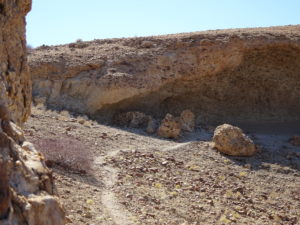Shelter
Building the sidewalls of simple Jahai huts
Jahai huts, characteristic of the Semang Orang Asli people, exemplify the widespread use of bamboo as a material for floors and sidewalls. The Jahai people settle in and near the area of the Royal Belum State Park in Perak, Malaysia,…
Beach huts of Zanzibar
Traditionally, the beach huts of Zanzibar are often simple thatched structures made from coconut palm leaves, mangrove poles, and coral stone. Initially, they served as a storage place and shelter for fishermen, who needed them to repair nets, store fishing…
Datoga huts
The Datoga are pastoralist people living in various regions of northern Tanzania. Their estimated population is about 30,000. One of their main settlement areas is on the eastern shore of Lake Eyasi. Datoga settlement areas consistently face pressure from the…
Traditional Hadza camps and huts
Traditional Hadza camps are loose affiliations of relatives, in-laws, and friends. Each camp has a few core members, but most others come and go as they please. If there are conflicts, the feuding parties will resolve them by simply separating…
Orang Rimba shelters in the forests of Sumatra
Orang Rimba (locally called Kubu) shelters and dwellings in the forests are designed in different styles rooted in their semi-nomadic lifestyle. These structures can be divided into two main groups: semi-permanent structures and shelters when they are on the move….
Stone huts at Mount Etna in Sicily
Stone huts on the northern side of Mount Etna in Sicily were built at least since pre-Hellenic times, around 4,000 BC. The building materials were basalt blocks from eroded lava at this location. The builders used dry-stone wall construction without…
Mentawai forest huts
The Mentawai people at Siberut Island use forest huts (called Sapou by them) for various reasons and purposes. One is a permanent dwelling for single, old men who do not live with their family in the Uma (family home in…
How Mentawai people assemble roof thatching panels
Roof thatching is vital for shelter waterproofing in the Mentawai tribe, which has around 6,000 members, on Siberut Island, Indonesia. Siberut lies about 100 miles (160 km) west of Padang in West Sumatra. Of the 6,000 Mentawai people, roughly 1,000,…
Termite soil as building material
Termite mounds are primarily made of soil, excavated below the mound, and carried to the surface by these insects. They use the soil to construct the mound, forming it into various shapes depending on the termite species. The exterior of…
Leaf huts as temporary shelters for shade
Members of the Khoi-san (Bushmen) tribe named Ju//hoansi are also called !Kung. Both the signs / and ! denote click sounds. The tribe is about 30,000 people spread over Namibia, Botswana, and southern Angola, with a central area at the…
Beer can hut near Spitzkoppe in Namibia
Empty aluminum beer- and pop cans will serve additional purposes after guzzling the content. Besides toys and various repair applications, these cans can build huts and houses! As can be seen in Texas, the US here, or Australia there, which…
First shelter of Henno Martin at Kuiseb Canyon
Two German geologists, Dr. Henno Martin and Dr. Herman Korn, went into hiding around the Kuiseb Canyon area, Namibia, for 2.5 years at the beginning of WW2 in 1940 to avoid internment by the South African Union government. During that…
Ant beds for building materials in Australia
Although they are commonly referred to as “Ant beds,” particularly in Australia, the structures are actually “Termite mound.” Despite their physical similarities to ants, termites are related to cockroaches rather than ants. However, like ants, they are small and numerous….













